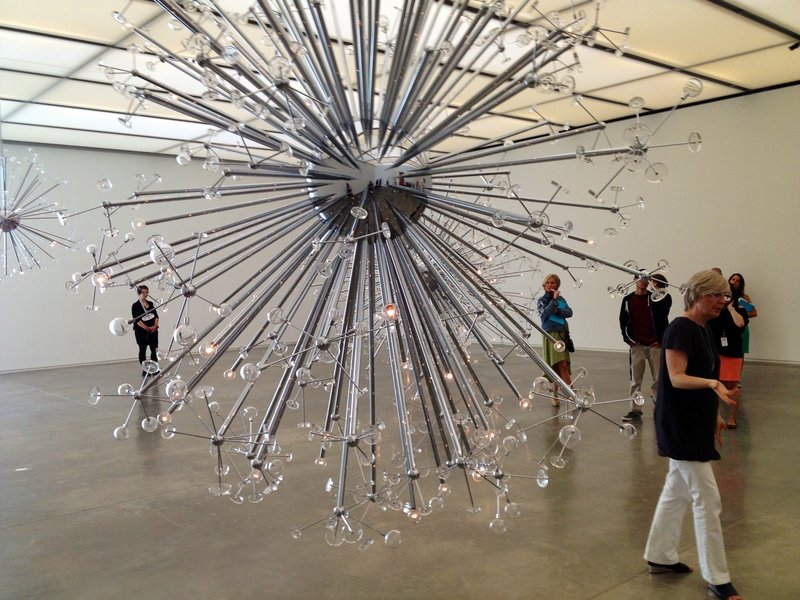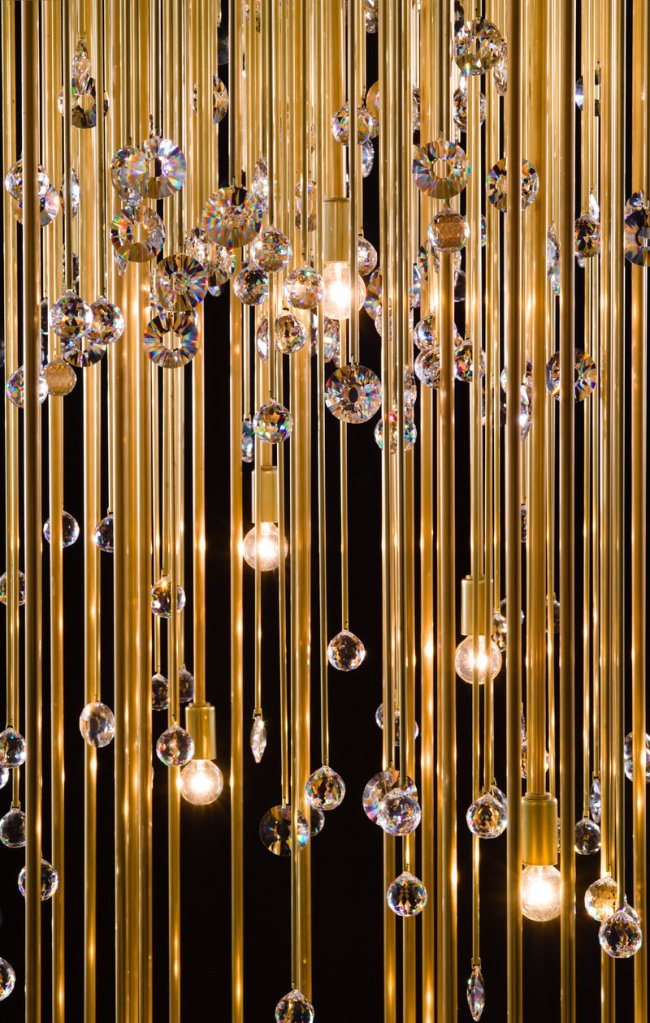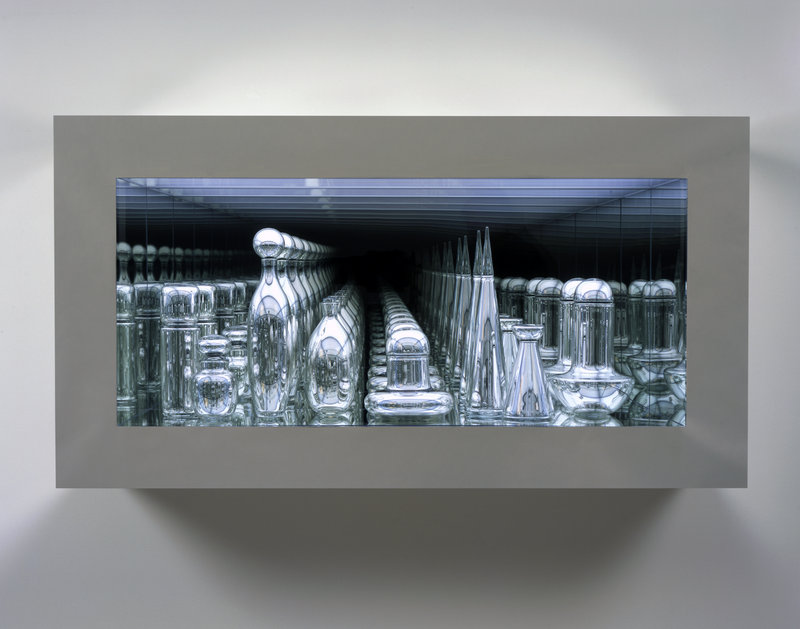BOSTON — Enjoy your own reflection.
The new exhibition at the Institute of Contemporary Art/Boston is all about glass and mirrors, and it puts the viewer in the middle of the mix. Josiah McElheny, a Boston-born artist who won a MacArthur genius grant in 2006, makes us question our place in the world in his latest exhibition, a mid-career survey aptly titled “Some Pictures of the Infinite.”
The show, which sprawls throughout several galleries at the South Boston museum, explores McElheny’s investigation of time and space, and how we as humans fit into the big picture of the universe. This show, which is on view through Oct. 14, documents the artist’s interest in history, politics and astronomy.
As chief curator Helen Molesworth noted last week, “There is no way to untangle time or space.”
McElheny gives it a good try.
This show is beautiful and bewildering. A glassblower who trained with, among others, Haystack regular Lino Tagliapietra, McElheny uses his glass skills to try to unravel the riddle of time and space and man’s place in both.
Glass is among the oldest materials known to man, and has been useful to humankind since ancient times. It is both durable and delicate, and plays a central role in how we view ourselves and our place in our world.
We look at mirrors to judge our appearance and prepare for our day. Our concept of self is based on how we see ourselves. Mirrors also provide a window to the world, in a shadowy kind of way. We use two-way mirrors for surveillance, and sometimes align mirrors in strategic locations and angles to steal a peek at others when they think we might not be looking.
Glass and mirrors also provide a mask and a false sense of space. In one of his most famous pieces, “Czech Modernism Mirrored and Reflected Infinitely” from 2005, McElheny places eight hand-blown vessels finished in mirrored glass within a mirrored display case. Within that environment, the vessels replicate themselves infinitely, appearing to stretch to the end of time and space.
The piece is visually stunning, and if we allow ourselves to go where the artist hopes to take us, it’s also disquieting. McElheny’s social commentary here is about commodification and repeated production. This is one and the same, over and over again, Molesworth said: “It represents capitalism at the most horrific moment.”
The centerpiece of this exhibition is a piece from 2008, “Island Universe.” McElheny teamed with astronomer David Weinberg to think about the enormity of the universe. Their work together has led to many pieces over the years, and this one focuses on the Big Bang theory.
It consists of five hanging chandelier-like sculptures, made with glass and chrome, suspended from the ceiling. They resemble starbursts, and suggest five possible outcomes of the formation of the universe. These are not whimsical ideas, but precise interpretations of the Big Bang theory, based on mathematical calculations and accepted science. With lights and mirrors and lots of glass and chrome, they are something otherworldly to behold.
They’re beautiful and awe-inspiring, and remind us again that, at its best, art forces us to think about who we are and how we fit into the larger world.
Staff Writer Bob Keyes can be contacted at 791-6457 or:
bkeyes@pressherald.com
Twitter: pphbkeyes
Send questions/comments to the editors.





Success. Please wait for the page to reload. If the page does not reload within 5 seconds, please refresh the page.
Enter your email and password to access comments.
Hi, to comment on stories you must . This profile is in addition to your subscription and website login.
Already have a commenting profile? .
Invalid username/password.
Please check your email to confirm and complete your registration.
Only subscribers are eligible to post comments. Please subscribe or login first for digital access. Here’s why.
Use the form below to reset your password. When you've submitted your account email, we will send an email with a reset code.